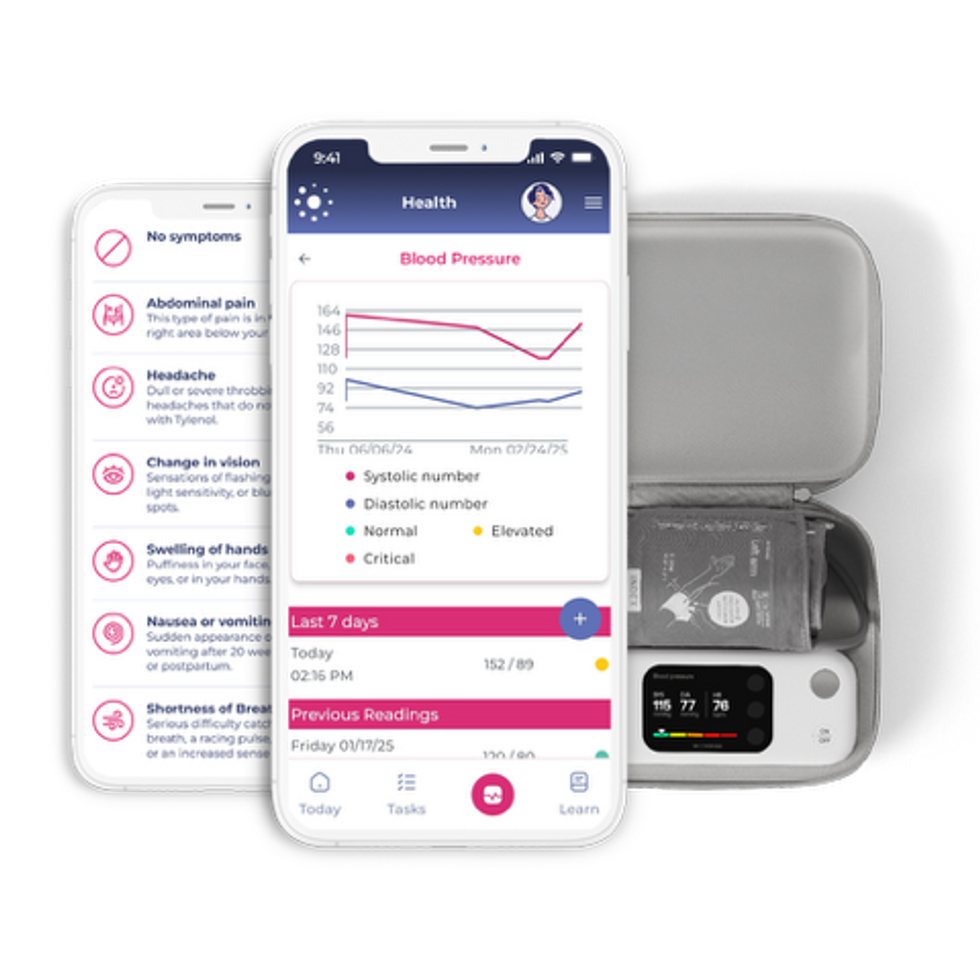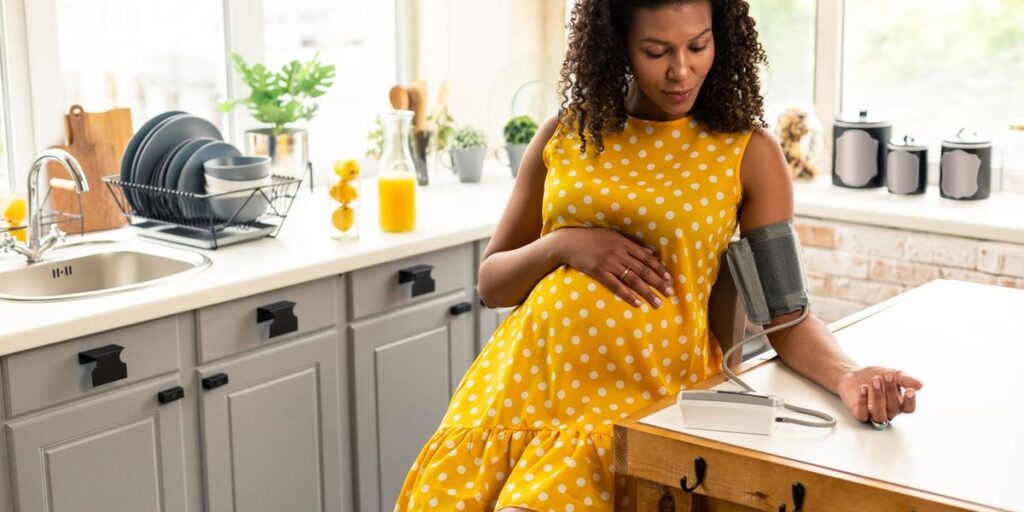Brittany Barreto, Ph.D., is a podcaster, an entrepreneur, and a molecular and human geneticist. (In different phrases, she’s actually sensible.) Learn her column right here every month to find out about what’s occurring on the planet of expertise and innovation in ladies’s well being.
Preeclampsia is a severe being pregnant complication that impacts 1 in 12 pregnancies in the US. It’s a number one reason for maternal dying and preterm birth, and it disproportionately impacts Black ladies, who’re 60% more likely to develop it and three times more likely to die from associated issues.
Regardless of these dangers, most preeclampsia care stays reactive, counting on signs like high blood pressure or protein within the urine that seem solely after the situation has developed. However a wave of recent applied sciences might make it potential to detect preeclampsia earlier, serving to healthcare suppliers (HCP) handle threat earlier than signs begin.
Listed below are 5 improvements shaping the way forward for preeclampsia care.
1. GestAssure: Predicting threat in hospitalized sufferers
Thermo Fisher Scientific’s GestAssure test (additionally referred to as the sFlt-1/PlGF ratio check) is a diagnostic device used for pregnant ladies hospitalized with hypertension between 23 and 35 weeks of being pregnant. The check measures the degrees of two proteins made by the placenta: sFlt-1, which will increase in preeclampsia, and PlGF, which decreases.
By analyzing the ratio of those proteins, GestAssure permits suppliers to foretell whether or not a affected person is prone to growing preeclampsia throughout the subsequent two weeks. A damaging end result can assist protected discharge from the hospital, whereas a optimistic end result could result in nearer monitoring or earlier supply. And outcomes are fairly fast. Most hospital labs can have them in about half-hour.
Though this check has FDA approval, it’s not but reimbursed by insurance coverage, which can imply it’s not an choice for everybody.
2. Mirvie: Early prediction with RNA evaluation
Picture/Courtesy of Mirvie
Mirvie has developed a easy blood check referred to as Embody that may predict preeclampsia months earlier than signs seem. The check makes use of RNA evaluation and synthetic intelligence to determine molecular signatures linked to preeclampsia, even in pregnancies with out conventional threat components. In a latest study that analyzed 9,000 pregnancies of girls ages 35 and up with no pre-existing high-risk circumstances, the check recognized 91% of pregnancies that developed preterm preeclampsia.
This proactive strategy permits HCPs to start out preventive care, similar to prescribing low-dose aspirin or rising monitoring, earlier.
Like GestAssure, the Mirvie check is FDA-approved however not but lined by insurance coverage. Mirvie is working to make the check extensively accessible within the close to future.
3. Delfina: Linked care with early promise
Delfina is designed with underserved and high-risk pregnancies in thoughts, providing a complete being pregnant care platform that features linked blood stress screens, instructional assets and telehealth providers. Their linked gadgets mechanically sync with the Delfina app, rising adherence to distant blood stress monitoring protocols.
A recent study of Delfina customers confirmed sufferers utilizing linked gadgets recorded extra readings and have been over six instances extra more likely to persist with the monitoring program in comparison with these utilizing handbook gadgets. Whereas Delfina shouldn’t be but extensively accessible, nonetheless wants extra analysis and doesn’t have the backing of a giant group like ACOG, the preliminary information is promising for managing high-risk pregnancies.
4. BabyScripts: Distant blood stress monitoring

Picture/Courtesy of BabyScripts
Hypertension is a key signal of preeclampsia. BabyScripts gives a digital platform that connects along with your doctor and digital medical data for distant monitoring of blood stress throughout being pregnant, together with instruments tailor-made to a affected person’s threat stage. Sufferers obtain a blood stress cuff and use the BabyScripts app to log signs, observe readings and be taught essential details about being pregnant.
Your HCP is alerted if readings are elevated or if sufferers are usually not checking their stress often. Analysis exhibits BabyScripts reduces the time to detect preeclampsia by 13 days, and 93% of each Black and white sufferers used the app to take their blood stress at residence. Actually, blood stress monitoring compliance was increased to 85% with the usage of the app and BabyScripts sufferers have been twice as more likely to attend postpartum visits than non-users.
BabyScripts is cleared by the FDA, lined by some insurance coverage, and supported by the American School of Obstetricians and Gynecologists (ACOG), making it extra accessible via customary prenatal care.
5. Kalia Well being: A brand new strategy to at-home testing
Nonetheless in improvement, Kalia Health is engaged on a urine-based check that detects protein linked to preeclampsia utilizing an at-home strip, just like a being pregnant check. This low-cost, easy-to-use check might enhance early detection, particularly for these in rural or underserved communities the place it’s onerous to get to an HCP.
Protein within the urine and hypertension are two hallmark indicators of preeclampsia. Making testing accessible at residence might be a game-changer for early intervention, notably amongst those that face obstacles to common prenatal visits. Nonetheless, the check shouldn’t be but accessible and remains to be present process scientific improvement.
Obstacles to entry stay
Whereas these instruments characterize thrilling advances, many are usually not but lined by insurance coverage, which may restrict entry. Pregnant people usually anticipate their care to be lined underneath bundled maternity advantages, and introducing new checks or applied sciences could include out-of-pocket prices.
Racial and socioeconomic disparities additionally persist. Black and Indigenous ladies face greater charges of preeclampsia and maternal dying, and so they could also be much less more likely to be provided or have entry to superior screening applied sciences. To really enhance outcomes, these improvements should be paired with coverage and reimbursement adjustments that guarantee equitable entry for all.
Trying forward
From RNA blood checks to at-home urine strips, these applied sciences sign a shift from reactive to proactive being pregnant care. Because the science grows and insurance coverage protection expands, these instruments have the potential to save lots of lives by figuring out high-risk pregnancies earlier and empowering households and care groups to take motion sooner.
The details about merchandise and/or providers on this column doesn’t represent any type of endorsement or advice by HealthyWomen. Hyperlinks are supplied as a comfort and for informational functions solely. This column could sometimes cowl firms through which Brittany Barreto is an investor.
From Your Website Articles
Associated Articles Across the Internet
